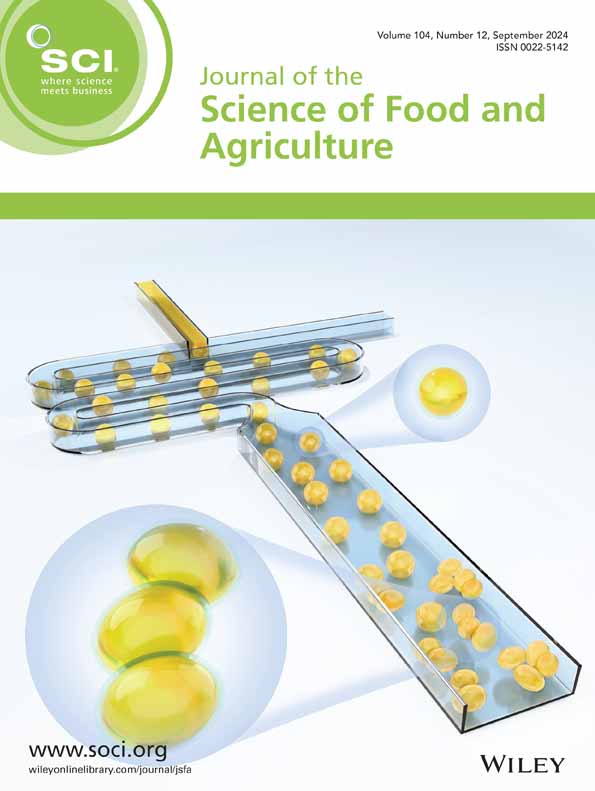求助PDF
{"title":"The contribution of vibrational spectroscopy and data analytics towards the achievement of the global sustainability goals.","authors":"Daniel Cozzolino, Louwrens C Hoffman","doi":"10.1002/jsfa.70206","DOIUrl":null,"url":null,"abstract":"<p><p>The United Nations Sustainable Development Goals (UN SDGs) were defined to improve the quality of life of the global population particularly regarding social and economic aspects, with a major focus on environmental sustainability. The incorporation of digital technologies into the agri-food sector has become a key enabler in increasing the efficiency, productivity, and sustainability of food production and processing systems. Digital technologies and innovations including artificial intelligence (AI), robotics, in-ground and remote sensors, connectivity, and internet of things (IoT) have been recognized as also being critical for the successful implementation of the UN SDGs. In particular, the utilization of sensing technologies (e.g., in-ground and remote sensors) has been shown to be of great importance to achieve these goals. The use of vibrational spectroscopy and data analytics have shown potential to contribute with the development and implementation of UN SDGs. An overview of the contribution of sensing technologies based on the utilization of vibrational spectroscopy (e.g., near- and mid-infrared spectroscopy, hyperspectral imaging) and data analytics to achieve the UN SDGs is provided. Advantages and limitations of these techniques are also discussed. The incorporation of technology will provide tools that can be used to monitor and predict the safety and quality of foods. Furthermore, digital technologies are enabling the development of novel decision-management systems along the food supply and value chain. Ultimately, the goal will be to assure the consumers the use of these technologies plays a key role in the applicability of the UN SDG. © 2025 The Author(s). Journal of the Science of Food and Agriculture published by John Wiley & Sons Ltd on behalf of Society of Chemical Industry.</p>","PeriodicalId":17725,"journal":{"name":"Journal of the Science of Food and Agriculture","volume":" ","pages":""},"PeriodicalIF":3.5000,"publicationDate":"2025-09-15","publicationTypes":"Journal Article","fieldsOfStudy":null,"isOpenAccess":false,"openAccessPdf":"","citationCount":"0","resultStr":null,"platform":"Semanticscholar","paperid":null,"PeriodicalName":"Journal of the Science of Food and Agriculture","FirstCategoryId":"97","ListUrlMain":"https://doi.org/10.1002/jsfa.70206","RegionNum":2,"RegionCategory":"农林科学","ArticlePicture":[],"TitleCN":null,"AbstractTextCN":null,"PMCID":null,"EPubDate":"","PubModel":"","JCR":"Q1","JCRName":"AGRICULTURE, MULTIDISCIPLINARY","Score":null,"Total":0}
引用次数: 0
引用
批量引用
Abstract
The United Nations Sustainable Development Goals (UN SDGs) were defined to improve the quality of life of the global population particularly regarding social and economic aspects, with a major focus on environmental sustainability. The incorporation of digital technologies into the agri-food sector has become a key enabler in increasing the efficiency, productivity, and sustainability of food production and processing systems. Digital technologies and innovations including artificial intelligence (AI), robotics, in-ground and remote sensors, connectivity, and internet of things (IoT) have been recognized as also being critical for the successful implementation of the UN SDGs. In particular, the utilization of sensing technologies (e.g., in-ground and remote sensors) has been shown to be of great importance to achieve these goals. The use of vibrational spectroscopy and data analytics have shown potential to contribute with the development and implementation of UN SDGs. An overview of the contribution of sensing technologies based on the utilization of vibrational spectroscopy (e.g., near- and mid-infrared spectroscopy, hyperspectral imaging) and data analytics to achieve the UN SDGs is provided. Advantages and limitations of these techniques are also discussed. The incorporation of technology will provide tools that can be used to monitor and predict the safety and quality of foods. Furthermore, digital technologies are enabling the development of novel decision-management systems along the food supply and value chain. Ultimately, the goal will be to assure the consumers the use of these technologies plays a key role in the applicability of the UN SDG. © 2025 The Author(s). Journal of the Science of Food and Agriculture published by John Wiley & Sons Ltd on behalf of Society of Chemical Industry.
振动光谱学和数据分析对实现全球可持续发展目标的贡献。
联合国可持续发展目标(UN SDGs)旨在提高全球人口的生活质量,特别是在社会和经济方面,主要关注环境的可持续性。将数字技术纳入农业食品部门已成为提高粮食生产和加工系统的效率、生产力和可持续性的关键推动因素。包括人工智能(AI)、机器人、地面和远程传感器、连接和物联网(IoT)在内的数字技术和创新也被认为是成功实施联合国可持续发展目标的关键。特别是,利用遥感技术(例如,地面和远程传感器)已被证明对实现这些目标非常重要。振动光谱学和数据分析的使用已显示出有助于制定和实施联合国可持续发展目标的潜力。概述了基于振动光谱(如近红外和中红外光谱、高光谱成像)和数据分析的传感技术对实现联合国可持续发展目标的贡献。讨论了这些技术的优点和局限性。技术的结合将提供可用于监测和预测食品安全和质量的工具。此外,数字技术正在推动沿着食品供应和价值链开发新的决策管理系统。最终的目标是向消费者保证,这些技术的使用在联合国可持续发展目标的适用性方面发挥了关键作用。©2025作者。约翰威利父子有限公司代表化学工业协会出版的《食品与农业科学杂志》。
本文章由计算机程序翻译,如有差异,请以英文原文为准。

 求助内容:
求助内容: 应助结果提醒方式:
应助结果提醒方式:


